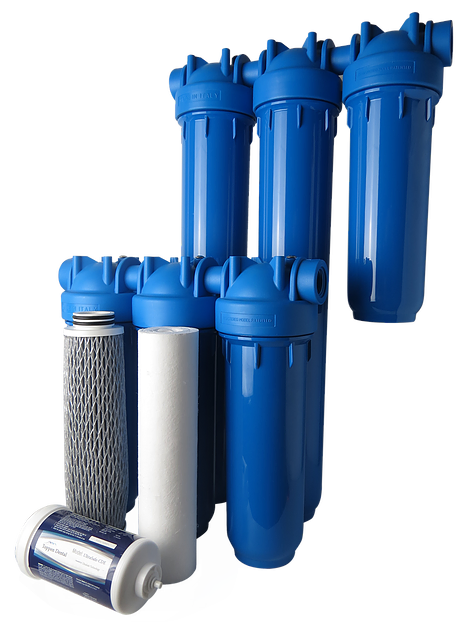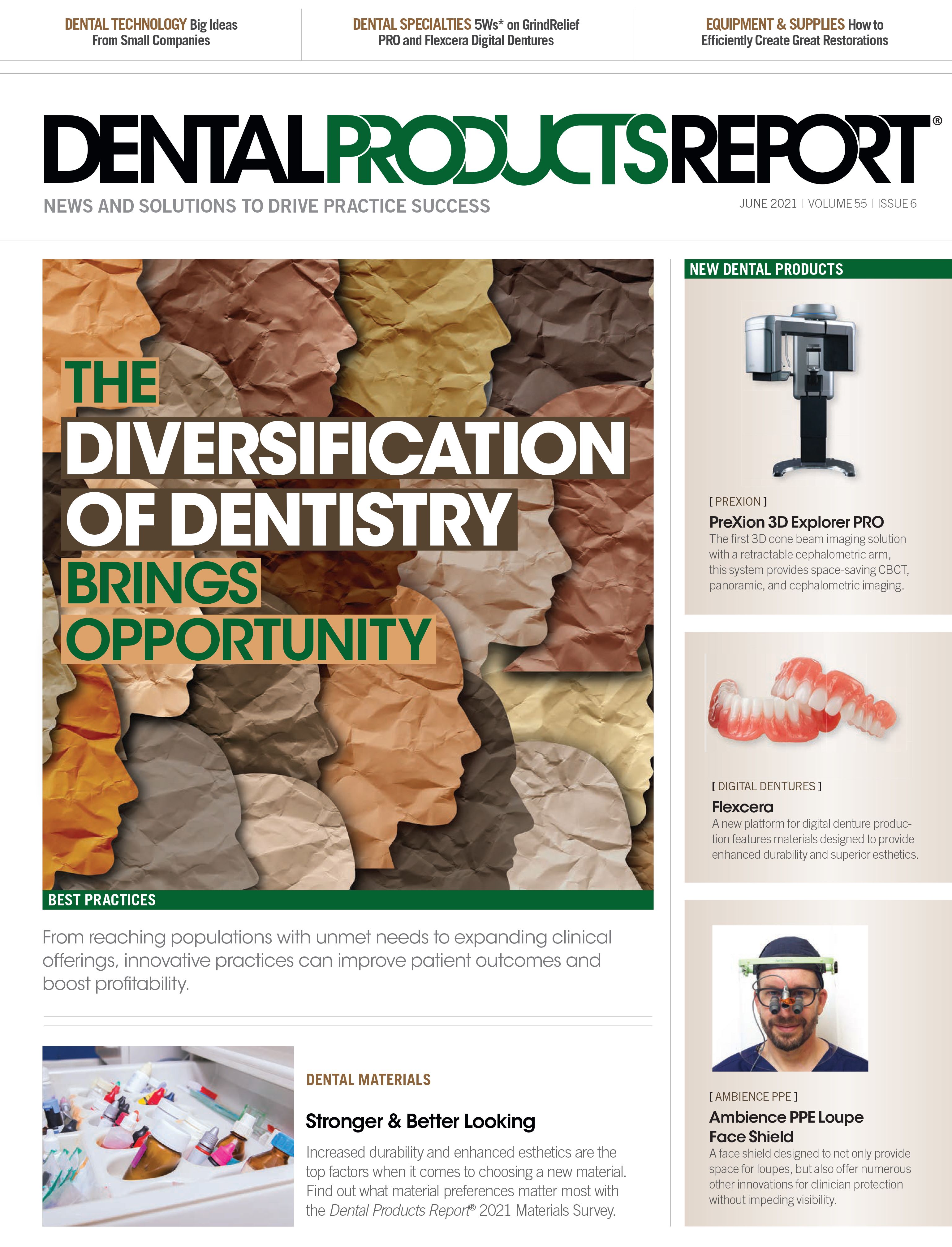When the full force of the pandemic hit in March 2020, everybody started disinfecting everything. Understandably, we took these measures to make our homes and work environments safe from the COVID-19 virus. But our newfound zeal to protect ourselves from disease may, in the long run, cause its own serious health problems. Achieving infection control at the expense of exposing staff and patients to harmful chemicals and their potential adverse effects is a false choice that dental offices need not accept.
The Cure Versus the Disease
Infection control seeks to eliminate potentially harmful pathogens, typically microorganisms such as bacteria and viruses, from water, surfaces, and the air. There is no question that effective protocols save lives. However, because many disinfection chemicals themselves have potentially harmful health effects, we trade one set of problems in the present for another down the line. With the massive increase in sanitization and disinfection since COVID-19 began, the population has been exposed to these harsh chemicals in previously unheard-of volumes, frequencies, and concentrations. A recent study by the Centers for Disease Control and Prevention (CDC) revealed a significant increase in the number of reports to poison centers regarding disinfectants and cleaners from 2019 to 2020. Exposure by inhalation has shown a 108.9% increase in the same time frame,1 and the longer-term impacts of exponential chemical usage may not be understood for years.
The history of municipal water treatment is highly illustrative of this point. In the early 1900s, human life expectancy was only 47 years in large part due to the number of waterborne illnesses such as typhoid fever, cholera, and dysentery transmitted by our drinking water.2 In 1914 the US Department of the Treasury set a new standard for water that allowed a maximum 2 colony-forming units (CFUs) per 100 m/ml, bringing chlorine treatment plants online across the United States.2 These measures virtually eliminated waterborne disease and increased life expectancy by 20 years. However, 50 years later, the Environmental Protection Agency (EPA) has linked chlorination by-products such as trihalomethanes and haloacetic acids in drinking water to lung, colon, and prostate cancer.3 We are now learning that the disinfection chemistry process itself has created devastating human health consequences.
Waterborne chemicals are not the only pathway to harmful exposure. Disinfectants sprayed on porous surfaces such as curtains, carpets, and upholstered furniture emit fumes for hours or even days. Indiana University recently concluded that the increased use of chemical disinfectants during the pandemic has created significantly higher levels of quaternary ammonium compounds (QACs) in residential dust.4 QACs are the major active ingredient in many EPA-approved cleaners and surface disinfectants.4 Exposure to these compounds has been associated with adverse effects on reproductive and respiratory systems.4 Our skin, the largest organ in our body, is particularly vulnerable to chemical exposure, as evidenced by a 57.2% increase in dermatological reactions.5 Experts also warn of potential neurological and immunological issues. Children are most at risk due to constant touching and mouthing of contaminated objects.5
Maintaining Dental Unit Water Lines
Compiled by Kristin Hohman
The problem of microbial contamination in dental unit waterlines is the result of how water is used during routine dentistry and the design of the dental equipment itself. Factors including small-diameter waterlines, low flow rates, long periods of stagnation, improper waterline termination, and even occasional backward contamination from the patient to the delivery system all contribute to microbial contamination.
The unfortunate reality is that even quality input water can quickly become contaminated in dental unit waterlines. Even a single microorganism that survives filtration and chemical treatment can replicate exponentially. As such, microbiological contamination of dental unit waterlines is a challenging issue that must be addressed rigorously.
COVID-19 renewed the dental industry’s focus on infection control and mitigation. Even though the pandemic did not exacerbate dental unit waterlines (DUWL) issues, it should still cause practices to be more vigilant.
The Centers for Disease Control and Prevention (CDC) laid out safety measures in its 2003 Guidelines for Infection Control in Dental Health-Care Settings. These include1:
- Use water that meets Environmental Protection Agency regulatory standards for drinking water (ie, ≤ 500 CFU/mL of heterotrophic water bacteria) for routine dental treatment output water
- Consult with the dental unit manufacturer for appropriate methods and equipment to maintain the quality of dental water
- Use sterile saline or sterile water as a coolant/irrigant when performing surgical procedures
Commercial devices and procedures designed for dental units include2:
- Self-contained water systems (eg, independent water reservoir) combined with chemical treatment (eg, periodic or continuous chemical germicide treatment protocols)
- Systems designed for single-chair or entire-practice waterlines that purify or treat incoming water to remove or inactivate microorganisms
- Combinations of these methods
Whether dental operatories are plumbed directly to municipal water supply lines, utilize independent bottle systems, or have a water filtration system installed, the following protocols and guidelines should be observed at all times for dental waterline maintenance3:
- Discharge air and waterlines for a minimum of 20 to 30 seconds after each patient, as recommended by the CDC. This procedure is intended to flush out patient material that might’ve entered the handpiece turbine, air, or waterlines.
- Don’t use waterline heaters, as they serve to increase the growth rate of any microorganisms that might be present in the lines.
- Never use water from a standard dental delivery system during surgical procedures. Instead, use sterile water or saline delivered by sterile means, such as autoclavable bulb syringes or autoclavable or disposable sterile tubing.
- Monitor water quality throughout the operatory environment at least quarterly by submitting water samples to a laboratory for heterotrophic plate count (HPC) testing, or by using an in-office testing product, to ensure compliance with water-quality standards of less than 500 colony-forming units (CFU) of bacteria per milliliter, as recommended by the CDC.
- If using any type of water filtration system—whether plumbed directly to the dental delivery unit or for filling dental bottles—it’s important to follow the manufacturer’s instructions for use.
References
1. Key recommendations for dental unit water quality in dental settings. Centers for Disease Control and Prevention. Updated June 18, 2018. Accessed May 20, 2021. https://www.cdc.gov/oralhealth/infectioncontrol/summary-infection-prevention-practices/dental-unit-water-quality.html
2. What can be done to ensure dental unit water quality? Centers for Disease Control and Prevention. Updated March 25, 2016. Accessed May 20, 2021. https://www.cdc.gov/oralhealth/infectioncontrol/faqs/dental-unit-water-quality.html
3. Elsenpeter R. How to maintain dental unit waterlines. Dental Products Report®. Published January 24, 2019. Accessed May 20, 2021. https://www.dentalproductsreport.com/view/maintaining-dental-unit-waterlines
Better Infection Control Technology Needed Now
Infection control in the dental office has traditionally focused on instrument sterilization, surface disinfection, and dental-unit waterline treatment. COVID-19 has also heightened our attention to air quality in terms of circulation, ventilation, and aerosols management. Most disinfecting technologies used in the dental office today employ harsh chemicals. Although effective for their intended purpose, most of these chemicals create their own range of undesirable collateral issues. Beyond negative human health effects, these collateral issues can include equipment damage, ecological harm, and permitting mutations that can lead to more resistant bacterial strains. The challenge of finding newer, better technologies that are environmentally sound, equipment friendly, and patient and staff safe while meeting the threshold parameters of pathogen destruction is considerable.
Simply getting clean water from municipal treatment facilities to your home or business is devilishly complex. These plants are staffed by full-time, certified water treatment professionals who are charged with maintaining regulatory requirements as set forth in the EPA Clean Water Act. Using sophisticated equipment, these superbly trained chemists and engineers test the water conditions to determine proper chemical concentrations and contact times to achieve disinfection. Yet across the country each year, these disinfection measures fail, resulting in thousands of boil orders.
Why Do They Fail?
The answer lies in the very nature of treating water by adding chemicals—so-called “dose-and-treat” protocols. It is practically impossible to maintain precise water quality control 100% of the time with dose and treat. Incoming water quality changes quickly depending on many variables, including weather conditions, industrial spills, or wastewater overflows. The amount and type of impurities in the water supply have a huge impact on how chemicals perform and what concentrations are required to achieve disinfection. It is also critical to understand what is in water before dosing with any chemicals because organic matter and minerals often react with the disinfectant, creating potentially harmful by-products. Although it might sound plausible to check for impurities and correct for potential chemical reactions in advance, there are hundreds of compounds that originate from a range of sources. Air emissions (mercury, nickel, sulfur, dioxins, etc), industrial effluents (chlorine compounds, chromium, organic wastes, copper, salt, etc), pesticides used in farming, and residual pharmaceuticals in sewer systems are just some of the problematic contaminants.
Safer Dental-Unit Waterline Treatment
Given the shortcomings of dose-and-treat technologies in the hands of experts, the challenges faced by the dental office staff in disinfecting dental-unit waterlines (DUWLs) are formidable. Contaminated water in aerosol form escapes from dental handpieces and scaling devices, resulting in respiratory exposure for everyone in proximity. DUWLs present ideal conditions for pathogen growth and can easily get out of control within 24 hours. For example, in the DUWL environment, Legionella concentration will double every 15 minutes. That means if left untreated, a count of 10 CFUs at 8 am grows exponentially to 160 CFUs by 9 am and explodes to 2560 CFUs 1 hour later. The stakes are clearly high in terms of protecting patients and the team. Purifying water in DUWLs prevents illness and saves lives, particularly if we do so without introducing other harmful chemicals into the process.
Ultrafiltration, a new technology from Toppen Health, provides a safer, more reliable alternative for DUWL disinfection versus chemical dose and treat. The product, called UltraSafe, employs a unique mechanical filtration method that eliminates the need for chemical disinfectants and their potentially harmful by-products. Ultrafiltration is capable of filtering river water, lake water, and drinking water to levels showing 99.999999% reduction in bacteria and 99.9999% reduction in virus. Not only does UltraSafe remove the free-floating pathogens, but it also filters out the nutrients on which they feed. Eliminating food supplies inhibits the formation of biofilms that clog lines, damage equipment, and harbor colonies of microorganisms.
UltraSafe protects the entire office and is available in configurations that connect to the incoming water source via an inline cartridge for individual chairs or as microfilters used in chairside water bottles.
Kinder, Gentler Surface Disinfection
For safer, more environmentally sound surface disinfection, we can take a page from Mother Nature’s playbook. Hypochlorous acid (HOCl) in a water solution, or what the Centers for Disease Control and Prevention refers to as super oxidized water, relies on the same chemistry as the innate human immune response.6
HOCl is an all-natural, organic, non-toxic, non-irritating, environmentally and ecologically safe sanitizing and disinfecting solution. It provides amazing healing attributes within the cellular endothelial and epithelial system and downregulates inflammation. The World Health Organization states that the use of HOCl at concentrations less than 2000 mg/L has no negative impact on human cells.7 HOCl is an EPA-registered disinfectant and is 80 to 120 times more powerful than bleach.
HOCl can be produced by devices that create an electrochemical reaction of water, salt, and electricity. It can also be incorporated into sodium dichloroisocyanurate, or NaDCC, tablets that react with water. Traditionally, stability has been a concern, but Toppen Health has a new method of producing ultrahigh purity HOCl with a long shelf life. Mixing the company’s DolfinPods Plus™ tablets with office tap water creates a gentle but extremely potent antimicrobial solution capable of rapid reduction of bacteria, viruses, spores, cysts, scale, and biofilm. Relative to other solutions and pre-impregnated wipes, DolfinPods Plus is cost-effective, requires less shelf space, and comes with reusable spray bottles that eliminate waste.
Redefining Safe
The pandemic-induced shift in the frequency and intensity of our disinfection activities is likely to be a permanent fixture in our dental practices as well as our daily lives. Operating in a post-pandemic new normal begs the dental community to re-evaluate disinfection protocols holistically, considering water lines, surfaces, and ultimately air quality. But accepting exposure to harmful chemicals that damage the environment as an unavoidable consequence of increased infection control measures is unnecessary. The cure need not be as potentially harmful as the disease. ●
References
- Chang A, Schnall AH, Law R, et al. Cleaning and disinfectant chemical exposures and temporal associations with COVID-19 — national poison data system, United States, January 1, 2020-March 31, 2020. Morb Mortal Wkly Rep. 2020;69(16):496-498. doi:10.15585/mmwr.mm6916e1
- The history of water chlorination - a major public health advance. Bright Hub Engineering. July 13, 2010. Accessed May 10, 2021. https://www.brighthubengineering.com/structural-engineering/77511-water-chlorination-history-the-mid-1800s-through-the-early-1900s/#water-chlorination-concerns
- Stage 1 and stage 2 disinfectants and disinfection byproducts rules. The United States Environmental Protection Agency. Updated January 14, 2021. Accessed May 10, 2021. https://www.epa.gov/dwreginfo/stage-1-and-stage-2-disinfectants-and-disinfection-byproducts-rules
- Zheng G, Filippelli G, Salamova A. Increased indoor exposure to commonly used disinfectants during the COVID-19 pandemic. Environ Sci Technol Lett. 2020;7(10):760-765. doi:10.1021/acs.estlett.0c00587
- Chen T. A rapid review of disinfectant chemical exposures and health effects during COVID-19 pandemic. National Collaborating Centre for Environmental Health. October 26, 2020. Accessed May 10, 2021. https://ncceh.ca/documents/field-inquiry/rapid-review-disinfectant-chemical-exposures-and-health-effects-during
- Chemical disinfectants. Centers for Disease Control and Prevention. Updated September 18, 2016. Accessed May 10, 2021. https://www.cdc.gov/infectioncontrol/guidelines/disinfection/disinfection-methods/chemical.html
- Water treatment and pathogen control: process efficiency in achieving safe drinking water. World Health Organization. 2004. Accessed May 10, 2021. https://www.who.int/water_sanitation_health/water-quality/guidelines/en/watreatpath3.pdf


